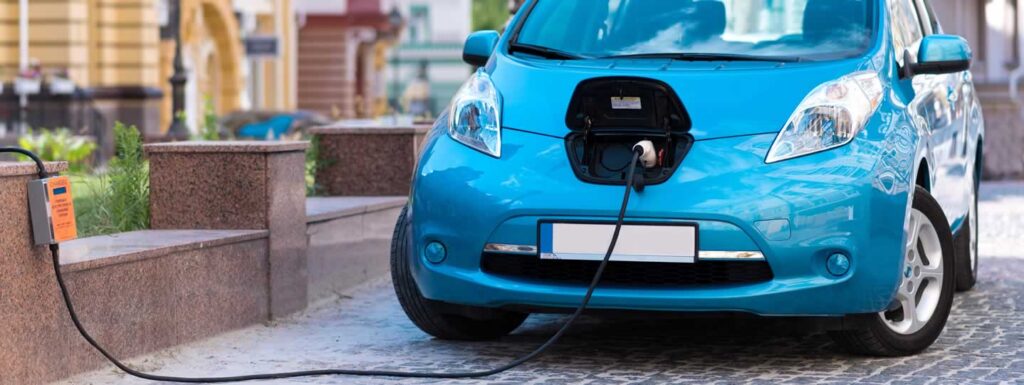
The electric car business in South America offers chances for investment. This is primarily due to increasing energy demands. Governments in Brazil, Argentina, and Chile are beginning to put in place incentives, subsidies, and harsher emission laws. This encourages foreign investment to help expand the region’s electric vehicle industry. Using electric vehicles reduces reliance on fossil fuels and lowers greenhouse gas emissions. Furthermore, the availability of renewable energy sources encourages the alignment of electric vehicles. This leads to a cleaner, greener transportation sector. This alignment supports the greater effort for sustainability, decarbonization, and energy independence. However, there are various issues including charging infrastructure, car affordability, and grid capacity. High-quality dampers are used in many parts of the electric vehicle infrastructure. They help reduce vibrations, noise, and improve system performance.
The dampers are designed to assure the safety, performance, and lifetime of both the vehicles and the charging infrastructure. They assure vehicle performance, vital system security, and infrastructure durability. Using renewable energy to power electric vehicles also helps to promote energy sustainability. For example, Chile and Argentina are increasing their wind and solar energy capacity for EV charging. This makes electric vehicles more eco-friendly. So let’s talk about the advantages of electric vehicles and dampers in the energy sector.
Applications of dampers in electric vehicle infrastructure.
Dampers play a crucial role in the electric vehicle infrastructure in South America. They enhance vehicle performance, protect critical systems, and ensure the durability of both vehicles and charging stations. This is by reducing vibrations, noise, and mechanical stress. This helps improve ride comfort and protect sensitive components like batteries and braking. They ensure the reliability of charging infrastructure in a areas characterized by diverse climates. The following are the uses and functions of dampers in electric vehicle infrastructure.

- Battery protection – batteries are susceptible to damage from vibrations, shocks, and jolts. Dampers help to protect battery systems from these impacts to prolong battery life and improve vehicle safety. Dampers assist in thermal management systems of EV batteries. This is by reducing vibration induced stress on cooling systems.
- Charging infrastructure protection – dampers work within EV charging infrastructure to protect sensitive electrical components from stress. Dampers absorb the shocks to protect the electrical systems and ensure consistent performance.
- Noise reduction – electric vehicles produce less noise compared to traditional internal combustion engines. Dampers help to reduce noise by isolating the components and absorbing vibrations. They also reduce noise and vibrations from transformers and other high-power electrical components.
- Vehicle suspension systems – dampers control the oscillation of the vehicle’s springs to ensure a smooth ride. It does this by absorbing shocks and vibrations. Dampers help manage extra weight by improving ride stability and preventing excessive body roll.
- Component protection in regenerative braking systems – electric vehicles use regenerative braking to convert kinetic energy into electricity. This process involves significant mechanical and electrical activity, which can generate vibrations and stress.
Difficulties for the South American electric vehicle industry
While electric vehicles are gaining popularity in South America, there are various obstacles impeding their implementation. These difficulties stem from economic, technological, infrastructural, and political factors. Increased government incentives, infrastructural expenditures, and local manufacturing can all help to overcome these difficulties. The South American electric car sector has the following issues.

- Underdeveloped charging infrastructure – charging stations are in major urban centers. This is including Sao Paulo, Bueno Aires, and Santiago. There is therefore long-distance travel for EV owners. Without fast chargers, charging an EV can take several hours, which causes inconvenience to consumers.
- Electricity grid limitations – some of the regions in South America may not have reliable electricity to support the widespread charging of EVs. Large-scale EV adoption would need significant upgrades to the grid infrastructure to handle increased electricity consumption.
- High cost of electric vehicles – EVs are more expensive than traditional internal combustion engine vehicles. The high initial cost of EVs makes them less accessible to the general population.
- Limited government support and inconsistent policies – some South American countries have introduced incentives for EV adoption. Many have not implemented comprehensive national policies to support the transition to electric mobility.
- Battery supply chain – most South American countries depend on imported EV batteries due to the lack of local battery manufacturing infrastructure. Extracting lithium can have significant water usage and environmental implications.